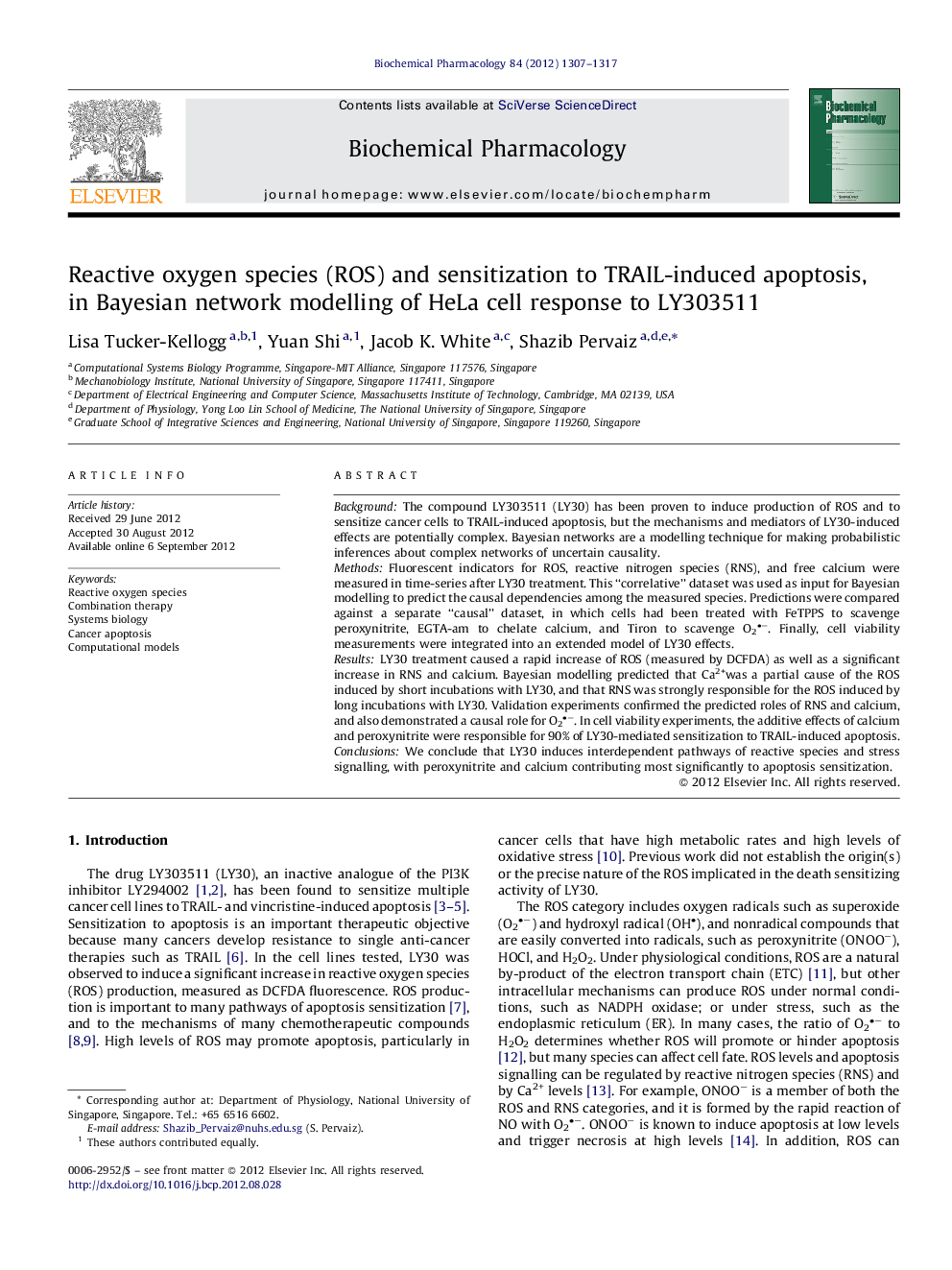| Article ID | Journal | Published Year | Pages | File Type |
|---|---|---|---|---|
| 5823958 | Biochemical Pharmacology | 2012 | 11 Pages |
BackgroundThe compound LY303511 (LY30) has been proven to induce production of ROS and to sensitize cancer cells to TRAIL-induced apoptosis, but the mechanisms and mediators of LY30-induced effects are potentially complex. Bayesian networks are a modelling technique for making probabilistic inferences about complex networks of uncertain causality.MethodsFluorescent indicators for ROS, reactive nitrogen species (RNS), and free calcium were measured in time-series after LY30 treatment. This “correlative” dataset was used as input for Bayesian modelling to predict the causal dependencies among the measured species. Predictions were compared against a separate “causal” dataset, in which cells had been treated with FeTPPS to scavenge peroxynitrite, EGTA-am to chelate calcium, and Tiron to scavenge O2â. Finally, cell viability measurements were integrated into an extended model of LY30 effects.ResultsLY30 treatment caused a rapid increase of ROS (measured by DCFDA) as well as a significant increase in RNS and calcium. Bayesian modelling predicted that Ca2+was a partial cause of the ROS induced by short incubations with LY30, and that RNS was strongly responsible for the ROS induced by long incubations with LY30. Validation experiments confirmed the predicted roles of RNS and calcium, and also demonstrated a causal role for O2â. In cell viability experiments, the additive effects of calcium and peroxynitrite were responsible for 90% of LY30-mediated sensitization to TRAIL-induced apoptosis.ConclusionsWe conclude that LY30 induces interdependent pathways of reactive species and stress signalling, with peroxynitrite and calcium contributing most significantly to apoptosis sensitization.
Graphical abstractDownload full-size image
